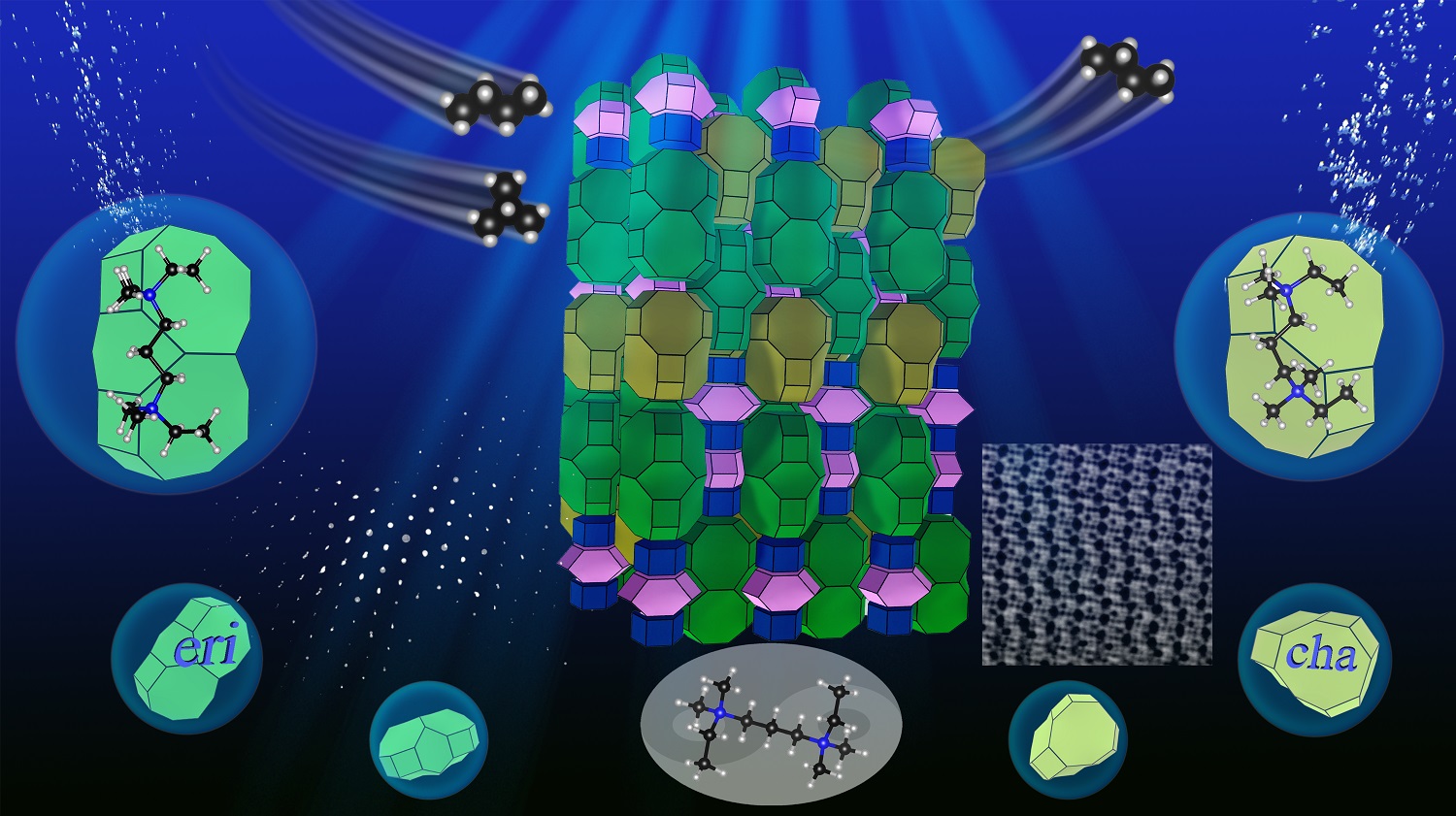Aluminophosphate (AlPO) molecular sieves (MSs) are crystalline microporous materials made from alternating PO₄ tetrahedra and AlO₄ tetrahedra, forming ordered channel systems and cage-like structures.
Small-pore AlPO MSs with three-dimensional (3D) channel systems are particularly promising for selective adsorption and energy storage. However, it remains a challenge to synthesize and determine their crystallographic structures.
In a study published in Journal of the American Chemical Society, a research group led by Prof. GUO Peng and Prof. LIU Zhongmin from the Dalian Institute of Chemical Physics (DICP) of the Chinese Academy of Sciences (CAS) synthesized a novel small-pore AlPO MS, named DNL-17, using a flexible diquaternary ammonium compound as organic structure-directing agent (OSDA).

Design, synthesis, and structural analysis of DNL-17 (Image by NIE Chenyang)
Researchers used cutting-edge 3D electron diffraction (ED) technology to directly determine the complex crystallographic structure of DNL-17. This new member of the ABC-6 family features 3D 8 * 8 * 8-ring pores and a framework structure containingfour characteristic cages (d6r, can, eri, and cha), with a distinct 24-layer stacking sequence along the c axis (AABAACAABBCBBABBCCACCBCC).
In addition, researchers identified a unique structure-directing effect in which the flexible OSDAs adopt various conformations to stabilize different cages during crystallization. They also demonstrated that DNL-17 shows promise for selective adsorption in the separation of n-butane and isobutane.
"This study demonstrates that OSDAs can construct novel AlPO MSs through different conformations, paving the way for the design and synthesis of new molecular sieves," said Prof. GUO.